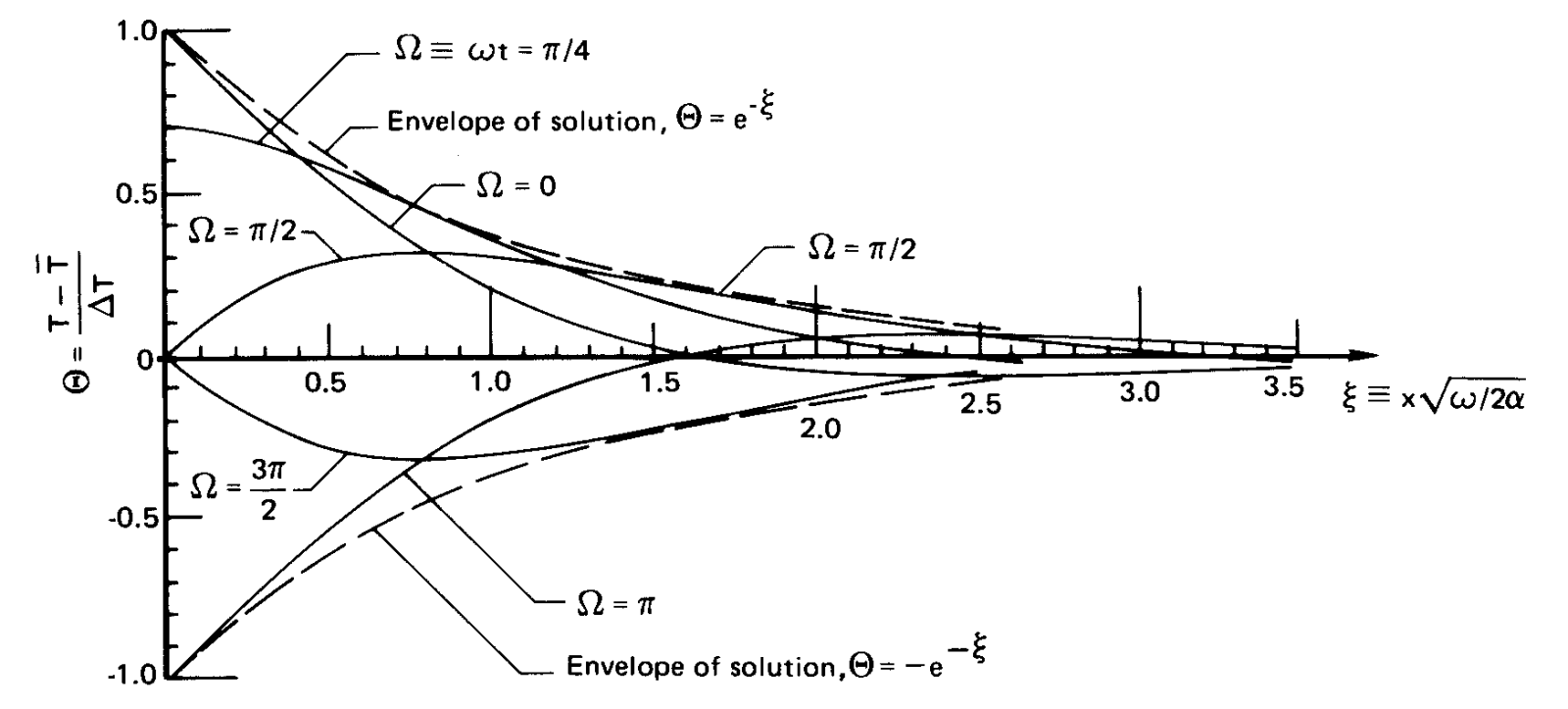Temperature Underground
Today, the temperature beneath our feet. The University of Houston presents this series about the machines that make our civilization run and the people whose ingenuity created them.
It's hot out today - or maybe it's cold. In either case, let's think about the temperature down in the ground below. Soil is a pretty poor heat conductor. So suppose we live up north where an average winter temperature is twenty degrees, and a summer aver-age is seventy. It takes time for the summer warmth to pene-trate. It takes time for the soil to cool in winter.
The result? The soil a couple feet down still feels last summer's warmth during winter. It's not as hot as it was at the surface last summer, but it's warmer than the soil above it. The temperature varies downward as a decaying wave - last winter's cold, then last summer's heat. But the deeper we dig, the less history survives. Finally, several feet into the ground, the temperature is constant year-round. It holds that average temperature.

How temperature varies underground. The solid lines indicate how temperature fades to toward the average, as we move deeper underground to the left. These lines are for starting out at various times of the year. (Theta is a "dimensionless" temperature and xi is a "dimensionless" depth.)
If we could visit an early 20th-century farm in that northern climate, we'd find people using something called a root cellar. Root cellars were pantries dug into the ground. They stayed all year at a temperature between summer and winter - maybe 45 degrees. They were fine places to store vegetables, fruits, meat, jam ... before we had refrigeration.
Root cellars were still commonplace in rural America when I was a young boy, in the 1930s. I usually saw them dug into the side of a steep rise in the land, where they had good drainage. And, people who live off the electric grid use them even today.
The deep average temperature in really cold climates is below freezing, and that creates what we call permafrost. The surface still melts in summer, but below that actively melt-ing/freezing layer, the soil is permanently frozen. The active layer is typically one to three feet deep; but it can reach much further, depending on the soil and surface conditions. The permafrost layer below it can have a highly variable thickness - anywhere from a few feet to almost half a mile.
Of course Earth's core is very hot. So below the permafrost, the temperature very slowly increases toward that hot core. It typically rises about one degree for every 70 feet deeper we go.
The active layer above the permafrost takes different forms. The common arctic form is called tundra. Tundra is a kind of organic mix made of low-growing mosses, lichens, ber-ries, and such. It freezes and melts without letting any large plants grow.
Vast permafrost regions are made up of long-frozen tundra. And global warming has just begun melting them. As they melt, that frozen organic matter releases huge amounts of carbon dioxide and methane - greenhouse gases that only add to the warming that releases them. (As if we didn't have enough to worry about already.)

Tundra in Greenland. Image courtesy of Wikimedia Commons.
So, next time we walk Earth's surface, we need to think about how much does go on, out of sight, in the seemingly solid ground below us. It's different in various parts of the world. But always relevant to our lives, up here on the surface.
I'm John Lienhard at the University of Houston, where we're interested in the way inventive minds work.
For the analysis of temperature variations in the soil below us, see J. H. Lienhard IV and J. H. Lienhard V, A Heat Transfer Textbook, 5th ed. (N. Y. Dover Pubs. 2011): pp. 233/4. The graph above is from this source. Click here to read it free of charge online.
See also the Wikipedia articles on Permafrost, Tundra, Soil thermal properties, and Geothermal gradient.
This episode was first aired on September 6, 2017